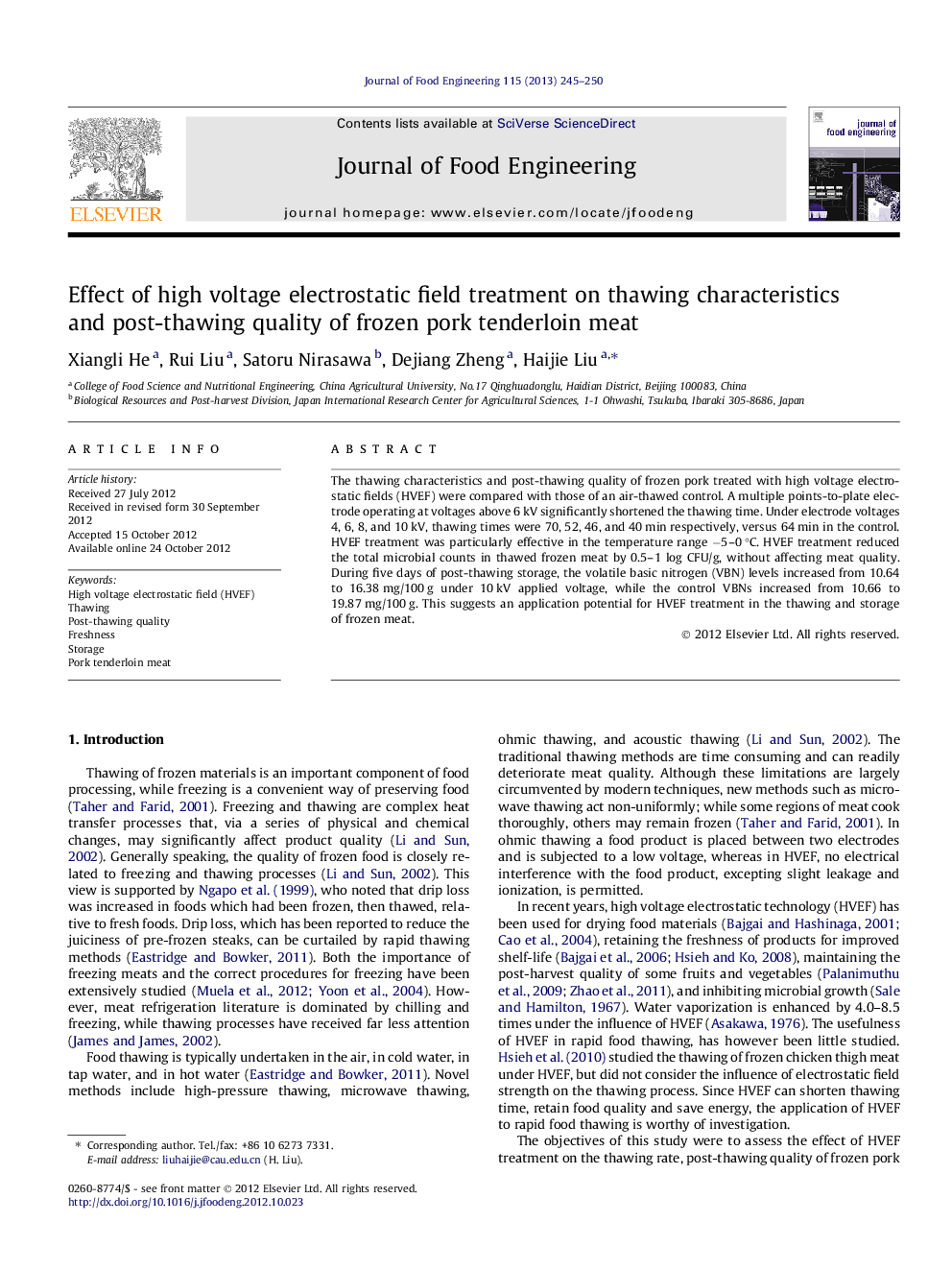| Article ID | Journal | Published Year | Pages | File Type |
|---|---|---|---|---|
| 223386 | Journal of Food Engineering | 2013 | 6 Pages |
The thawing characteristics and post-thawing quality of frozen pork treated with high voltage electrostatic fields (HVEF) were compared with those of an air-thawed control. A multiple points-to-plate electrode operating at voltages above 6 kV significantly shortened the thawing time. Under electrode voltages 4, 6, 8, and 10 kV, thawing times were 70, 52, 46, and 40 min respectively, versus 64 min in the control. HVEF treatment was particularly effective in the temperature range −5–0 °C. HVEF treatment reduced the total microbial counts in thawed frozen meat by 0.5–1 log CFU/g, without affecting meat quality. During five days of post-thawing storage, the volatile basic nitrogen (VBN) levels increased from 10.64 to 16.38 mg/100 g under 10 kV applied voltage, while the control VBNs increased from 10.66 to 19.87 mg/100 g. This suggests an application potential for HVEF treatment in the thawing and storage of frozen meat.
► HVEF treatment induced by different voltages significantly increased thawing rates. ► HVEF treatment mainly reduced the thawing time within the crucial −5–0 °C range. ► HVEF treatment did not affect the post-thawing quality of the frozen meat. ► HVEF treatment can inhibit microbial growth by 0.5–1 log CFU/g during storage. ► HVEF treatment can reduce volatile basic nitrogen production to extend the storage.
